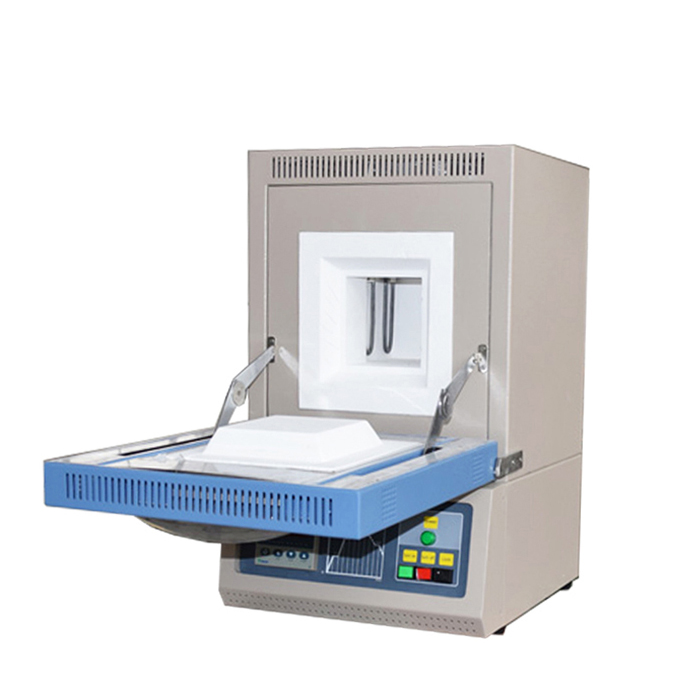Intelligent temperature controller function of experimental electric furnace
Time:2020-09-04 08:51 Click:
PV start (PVST)
When the controller starts, it is generally executed from the starting point set by the program (the starting point is determined by the parameter setting), but in fact, the actual value of the current temperature is greater than the set starting point in most cases. If starting from the starting point of the program setting, it will take a certain amount of time to execute until it is consistent with the current actual temperature value. This will inevitably waste time. The PV start method can solve this problem. PV start is also called servo tracking. Similar to this function, there is also the Hot Start mode, which uses the actual value of the current temperature as the starting point of the program. That is to say, when the program is running, the controller automatically finds the set point corresponding to the program according to the actual temperature value measured, and starts to execute the program as the starting point of the program.

experimental electric furnace Ready
When starting the program, restarting after an unexpected power failure, or manually modifying the settings, the program needs to continue to run. At this time, the measured value of the process variable may not be equal to the set value. If the deviation is greater than the set positive (negative) deviation alarm value, control The controller does not alarm immediately, but uses the preparation function of the controller to pause the timing of the program, and first adjust the error between the measured value and the set value to be less than the deviation alarm before starting the program. The preparation function can guarantee to track the program curve, but the running time may increase due to preparation time. The preparation function is basically the same as PV start. If PV start is set, there is no need to set the preparation function. Make the preparation function effective by setting the parameters. Preparation time may increase the running time. The preparation function is basically the same as PV start. If PV start is set, there is no need to set the preparation function. Make the preparation function effective by setting the parameters.
Wait and recover
Wait (Wait)
Waiting is a control function of the controller. Only when the “waiting” function is activated through parameter settings will it take effect during the program running. For example, an event is set in the process program, such as time
Interval events, external events, etc., once these events are activated and the "wait" function takes effect, the program will wait until the event is invalid, that is, after the event is executed, it will continue to execute the program or start the next program segment. During the waiting period, it is equivalent to adding a heat preservation program segment, as shown in Figure 2.
Power Fail Recovery
A power failure event of the controller occurs during the program running. If you want to restart, you can set the power failure recovery function in the program, including:
(1) The program will run from the last set point when the power is off, which will make the power supply run for a period of time at full load, so that the temperature of the controlled object can reach the value when the power is off in a short time.
(2) Restore the slope of the process variable change to the slope of the controller operating curve before the power failure.
Which recovery method should be used should be determined according to the characteristics of the controlled object. The former may cause temperature fluctuations but can shorten the heating time, while the latter can reduce temperature fluctuations but increase
Added heating time.
Interrupt, skip, test
Interrupt
Interruption refers to the suspension of the execution of the process program, and the control output is restored to the initial state, instead of keeping the output in the current state like the hold function. After using the interrupt function to stop the program, you can continue to execute the program from the interruption point. This is different from the reset function, which can only execute the program from the beginning of the program.
Jump
In the process of program execution, sometimes according to the needs of the heating process, the program segments that do not need to be executed are skipped, and the step function of the controller is used. The jump function of the controller is divided into program segment jump and time jump. There are two ways of block skipping. One is to jump from the current running block to the next block, as shown in Figure 3, at t. At the moment, the block skip is effective, and it jumps directly to the next block for execution; the second is to skip the block continuously from the first block instead of skipping some blocks from the middle of a technological program.
test
Program testing is also called fast execution. Before the formal execution of the process program, the purpose of using the test function is to verify the correctness of the program operation. The speed of program testing can be set by parameters. Executing the test function will turn off the controller output, only the status display. The test function of the program can be used in the following situations:
(1) Check the correctness of a process procedure.
(2) An event is set in a process program to check the start and close of the event.
(3) The connection function is used in the program, that is, to connect several process programs together to verify the correctness of the connection.
(4) The cycle function is used in the program to check whether the program cycle is correct.
Please leave a message here. We will reply you in 24 hours.
